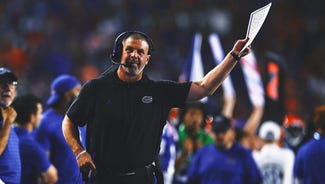
2025 NCAA College Football Overtime Rules: How does OT work?
Unlike other sports, college football's overtime rules offer a unique twist. But with changes in recent years, it's hard to keep up with exactly how OT works in college games. Check out everything you need to know about overtime rules in college football.
When did college football overtime start?
Before the 1995 season, college football games that ended in a tie after regulation resulted in a tie for each team. During the 1995 season, the NCAA approved a change that would allow overtime in games starting with the bowl season.
In the 1995 Las Vegas Bowl, Toledo and Nevada headed into OT tied at 37. Toledo went on to win with a field goal. In the following 1996 college football season, overtime was fully adopted for the FBS. These rules remained in effect until some changes in 2019 and further adjustments in 2021.
How does college football overtime work?
In college football overtime, the game continues if it's tied after four quarters. Unlike NFL overtime rules, each team gets a possession of the football from the opponent's 25-yard line. If one team ends up with more points than the other in the first overtime period, that team wins the game. If tied after an overtime period, another is played at the same starting point. If still tied after two periods, teams alternate 2-point tries to decide the winner. Unlike the NFL, there's no overtime clock. Each team gets their full possession, but a play clock still applies.
Arch Manning & Jeremiah Smith in Joel Klatt’s top 5 players for the 2025 season | Joel Klatt Show
How is possession determined in overtime?
When a game is tied after regulation, the visiting team captain flips a coin. The winner chooses whether to start on offense or defense in the first overtime. The loser takes the remaining option. Teams often choose to defend first to determine their scoring needs. If the first team scores a touchdown, the other must score a touchdown too. If the first team doesn't score, a field goal can win the game.
How do the rules change after the 1st overtime?
In the second overtime, teams start from the opponent's 25-yard line. Whatever team has the most points after each team has had a possession wins. After a touchdown, a 2-point conversion must be attempted. This rule was added in 2021 to limit long overtime games. Before 2021, 2-point conversions were only required after touchdowns starting in the third overtime.
Can a game end in a tie?
With the introduction of overtime in 1996, college football games no longer end in ties.











